Demographic change plays a key role in the development of the labor supply in Germany. A large proportion of the current workforce belongs to the baby boomer generation and will retire in the next 15 years or so. The younger age groups will not be able to fill the resulting gap. In this chapter, we show how this is reflected in terms of numbers now and in the future and to what extent some sectors or regions are more affected than others.
Number of people of working age will fall over the next 15 years
The number of people of working age (here: aged 20 to 66) will decrease in the coming years. This is a key finding of the 15th coordinated population projection. Even with high net immigration – i.e. a high positive balance of immigration and emigration – (variant 3 in the chart), there would be a slight decrease of 1.6 million people by the mid-2030s. With low net immigration (variant 1), the number could fall by 4.8 million people.
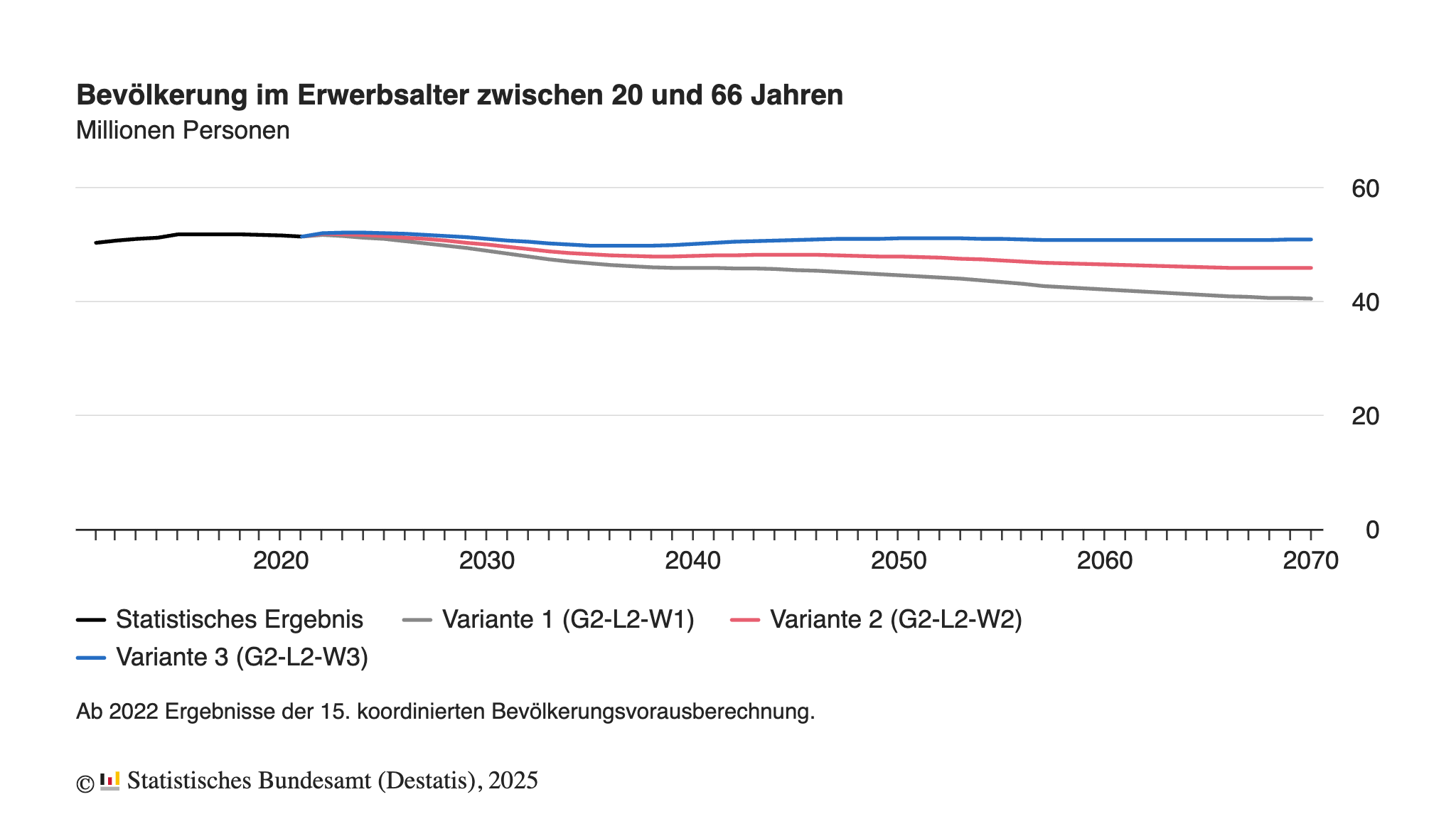
Significant regional differences in the number of 20- to 66-year-olds
In the western states, the working-age population is expected to shrink until the end of the 2030s and then stagnate. A stable number of 20- to 66-year-olds is only possible with high net immigration and a rising birth rate (variant 5). If, on the other hand, net immigration and the birth rate both fall (variant 4), the number of people of working age in 2070 would be more than 20 % lower than in 2021.
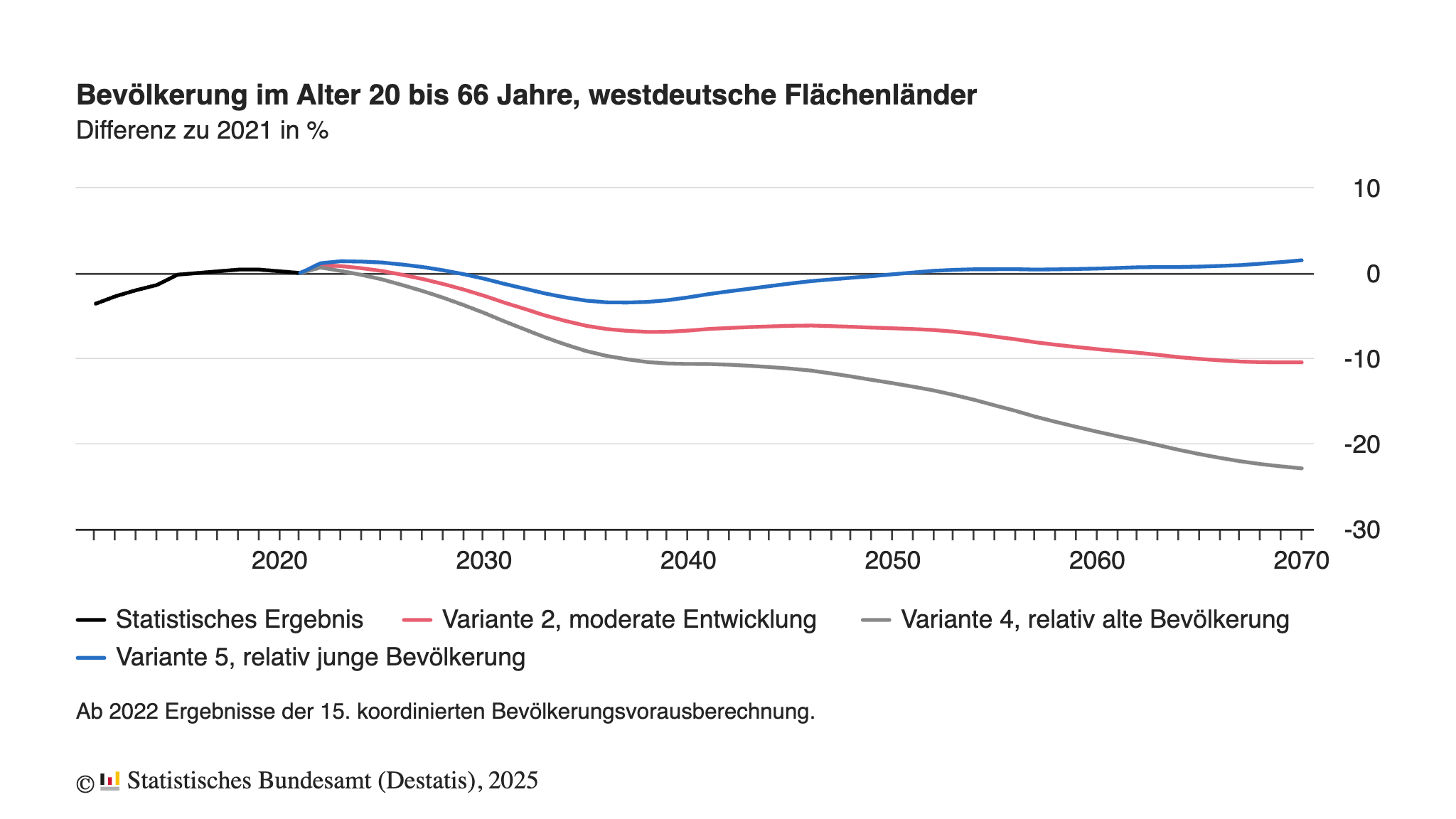
In the eastern German states, the number of 20- to 66-year-olds will continue to shrink regardless of the assumptions made. Depending on the variant, the number of people of working age could fall by between 14% and 29% by the end of the 2050s. In 2070, the assumed trend would lead to a decline to between 5.0 million and 6.6 million.
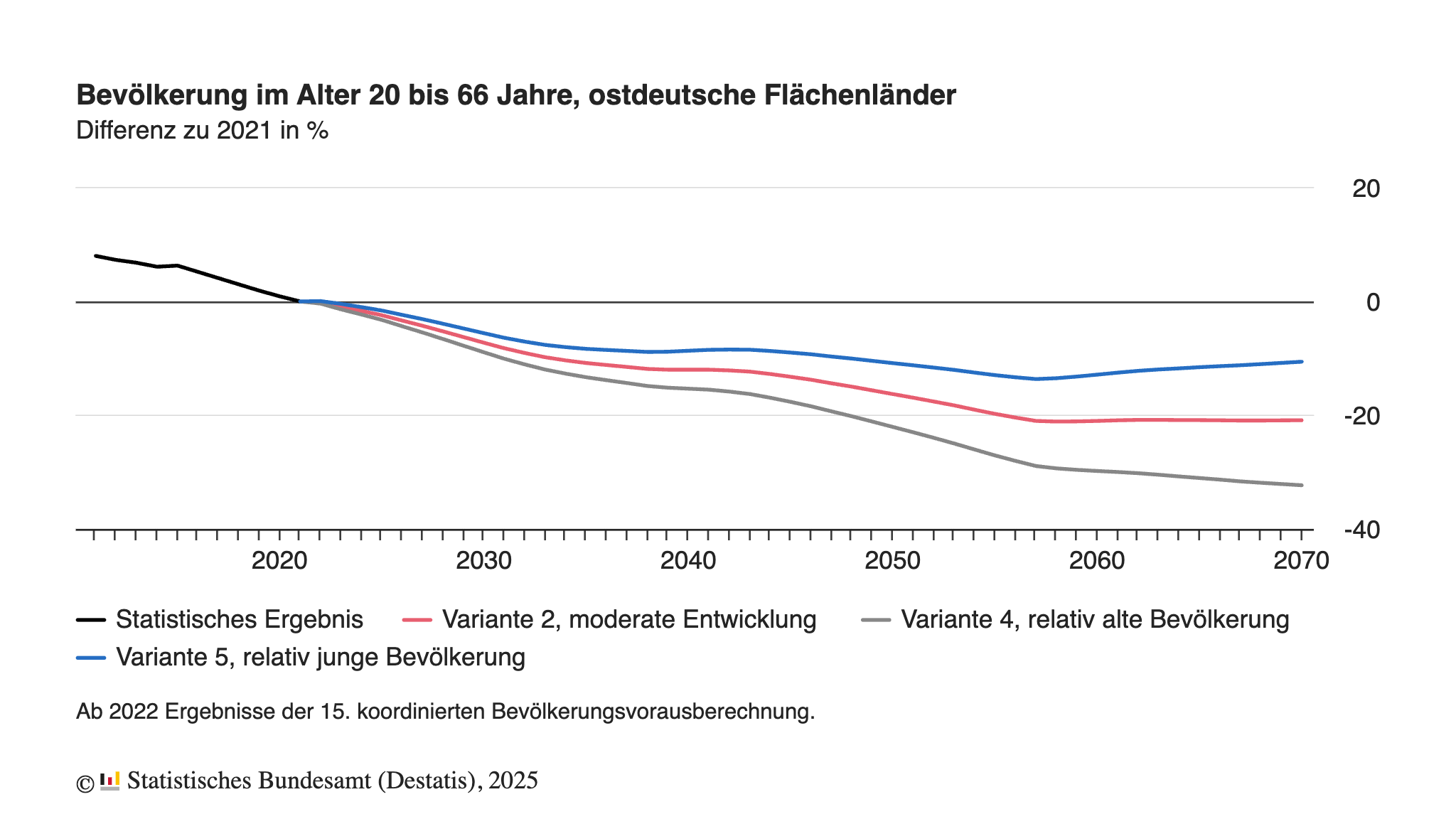
The population in the city states has a younger age structure than in the territorial states. In the city states, the number of people of working age will therefore tend to grow and only fall with relatively low net immigration (variant 4).
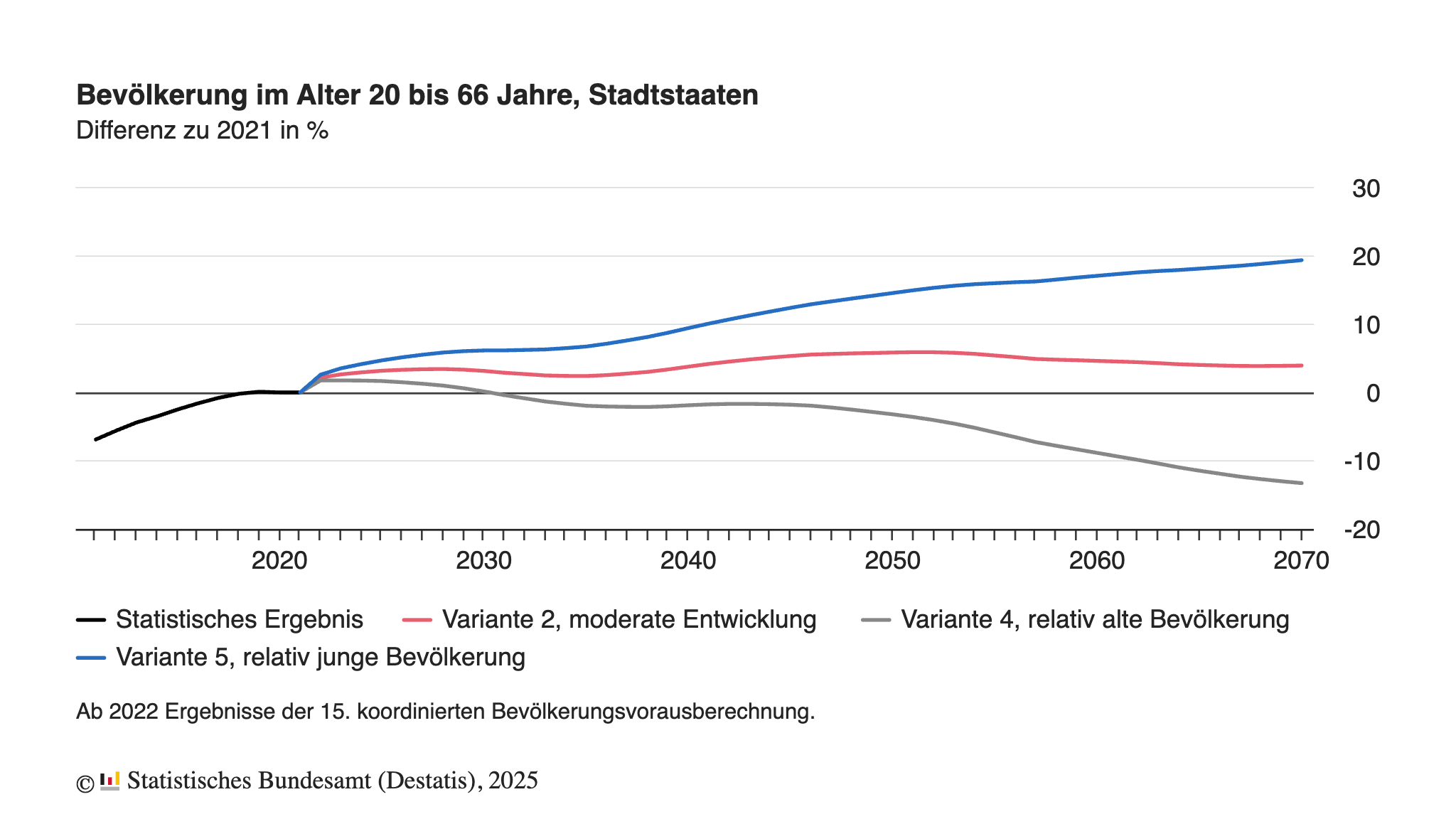
Labor force participation of 25- to 59-year-olds already at a very high level
In addition to demographic trends, labor force participation also influences the number of workers available to the labor market. In Germany, participation in the labor market was already at a very high level, particularly in the age groups between 25 and 59. In 2023, for example, almost 94% of men aged 40 to 44 and a good 84% of women in the same age group were available to the labor market. The labor force participation of 20 to 24-year-olds was slightly lower: Here, just under three out of four people were active in the labor market. Among 60 to 64-year-olds, the figure was a good two out of three. The labor force potential in Germany is therefore already heavily exhausted. Even greater activation of the younger and older age groups would not be enough to fully compensate for the demographic effect.
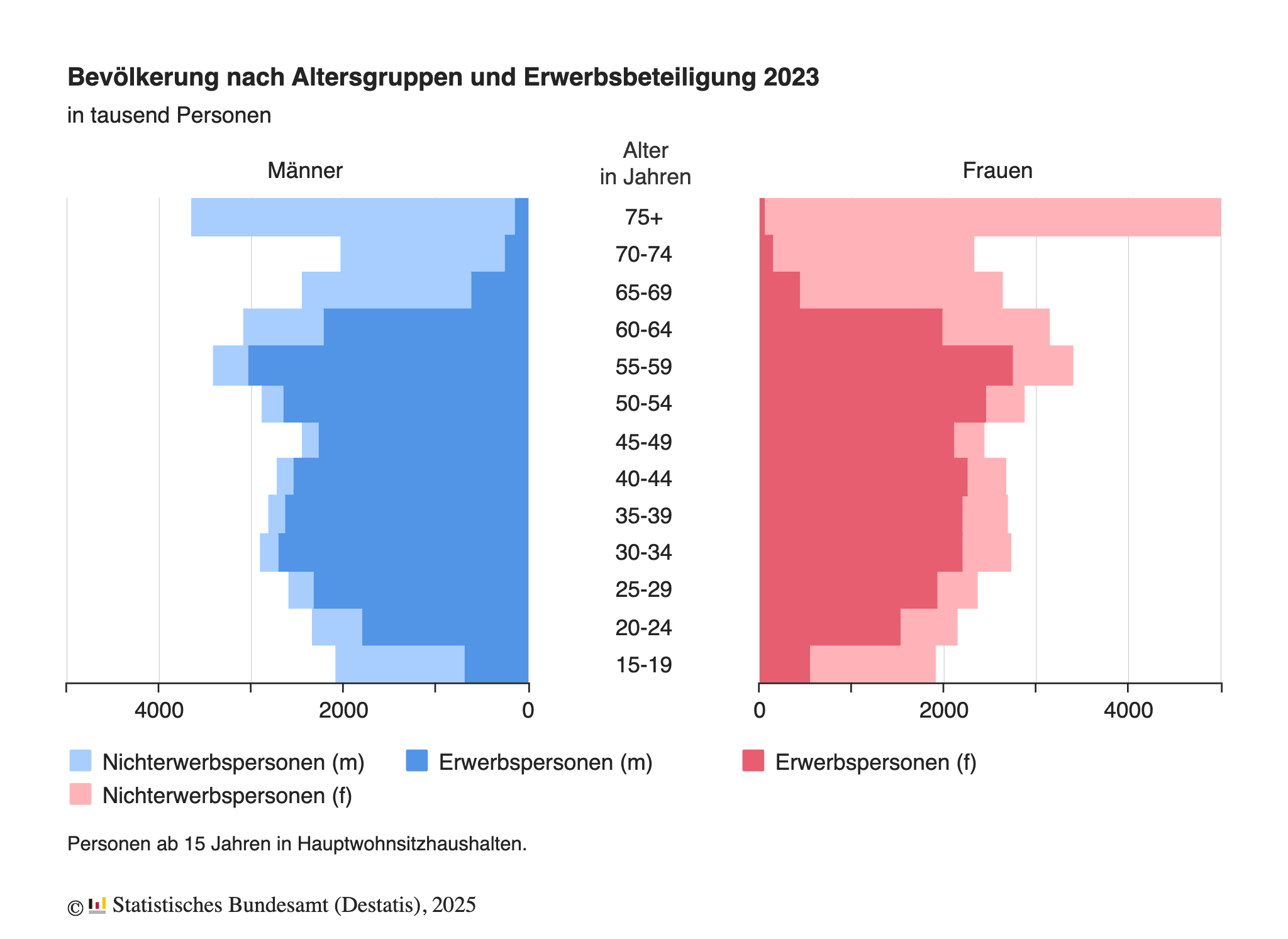
Proportion of older workers aged 55 and over steadily increasing
More and more older people are entering the labor market. While 17.5% of the workforce was aged 55 and over in 2011, by 2023 this proportion had risen to over a quarter (26.1%). This trend is the result of the increasing ageing of German society and the increased activation of people in the years before they reach the statutory retirement age. The effects of the gradual increase in the retirement age to 67 can also be seen. For example, the proportion of people aged 65 and over in the workforce rose from 1.8% in 2011 to 3.7% in 2023.
However, it can be assumed that this trend will not continue, as baby boomers will retire in the next 15 years. Despite a high labor force participation rate among the older population, the proportion of people aged 55 and over in the workforce is likely to stagnate or even decline.
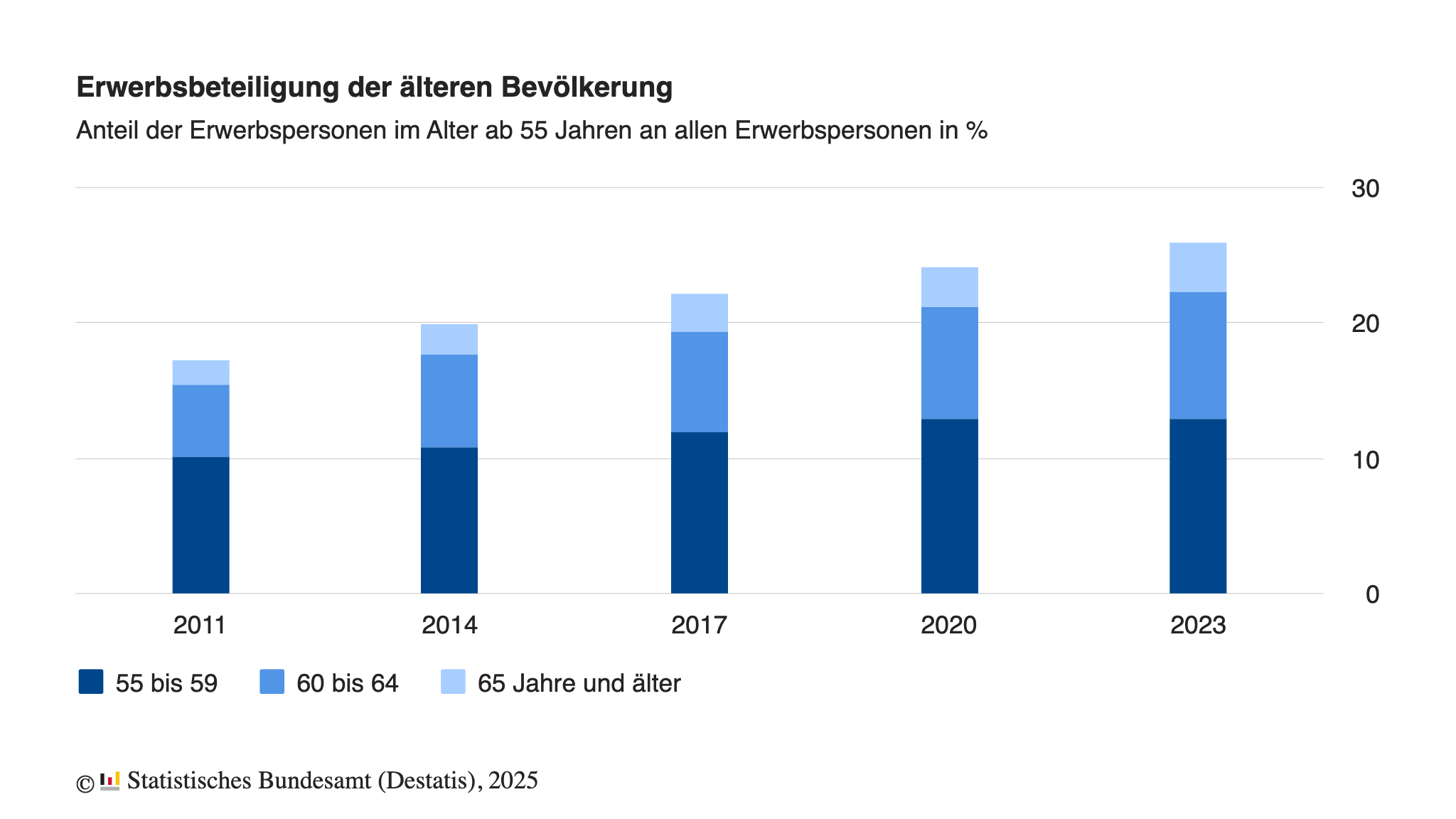
Demand for nursing staff will increase by 33 % by 2049
The increasing number of people in need of care in an ageing society and the care they require is a challenge for the care labor market. With the help of the nursing staff forecast, the future development of the number of nursing staff is to be estimated and compared with the possible development of the need for nursing staff. The demand for nursing staff will increase by a third (+33%) within 30 years: from 1.62 million nursing staff in 2019 to 2.15 million nursing staff in 2049.
The development of demand differs greatly between the various types of facility. Due to the stronger growth in the number of people in need of care compared to hospital cases, (outpatient) nursing and care services as well as nursing homes, retirement homes and homes for the disabled will require more nursing staff than hospitals. In detail, the number of nursing staff required in (outpatient) nursing and care services will increase by around two thirds (+60%) by 2049. Compared to 2019, around 180,000 more nursing staff will be required. In nursing homes, homes for the elderly and homes for the disabled, there will be around 240,000 more nursing staff by 2049 (+39%). In absolute terms, the demand will therefore increase the most in these facilities. Hospitals are expected to require around 100,000 more nursing staff by 2049, which corresponds to an increase of 14%.
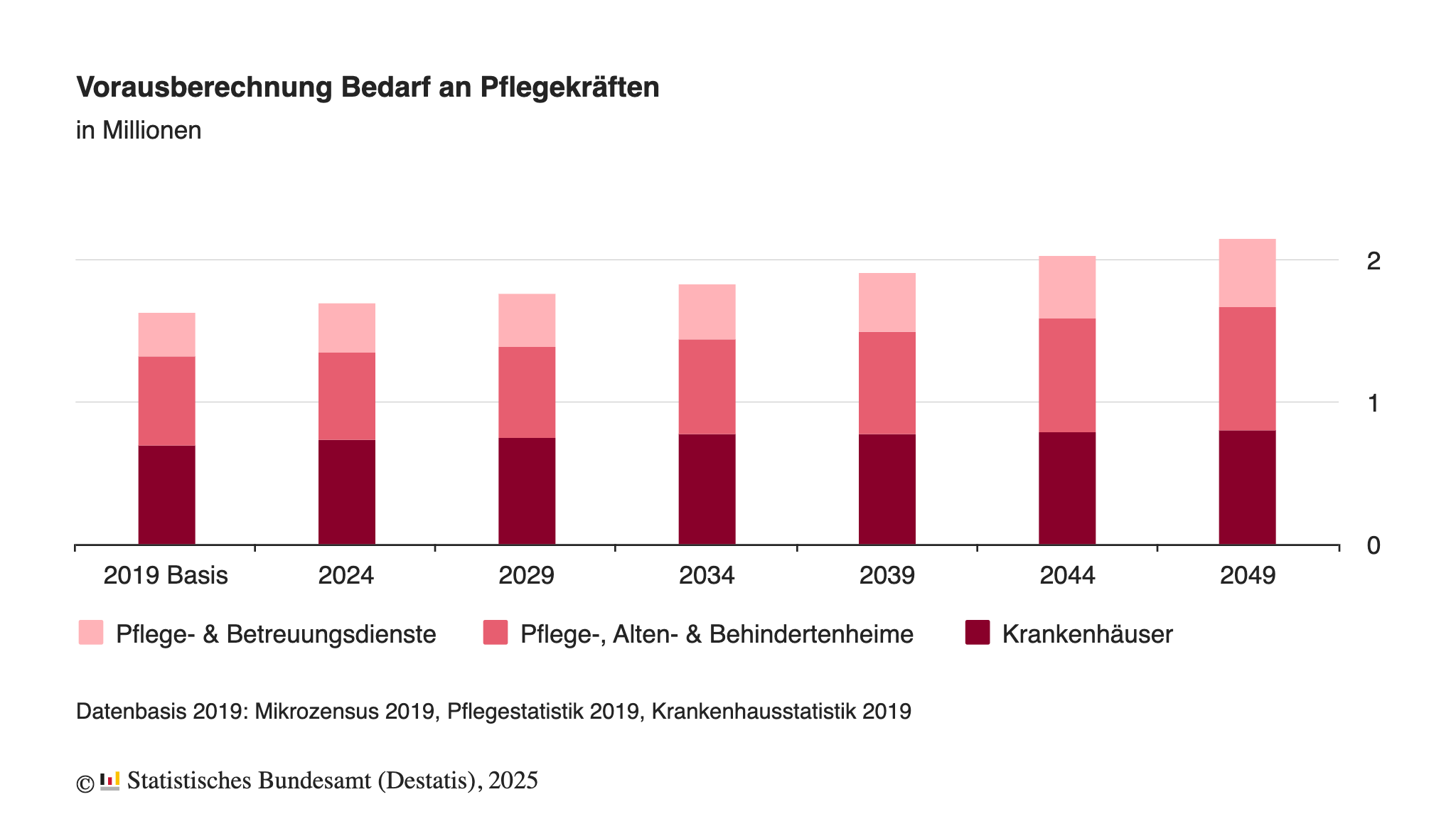
At least 280,000 additional nursing staff are expected to be needed by 2049
Based on a requirement of 2.15 million working nurses in 2049, there will probably be a shortage of between 280,000 and 690,000 nurses in Germany by then.
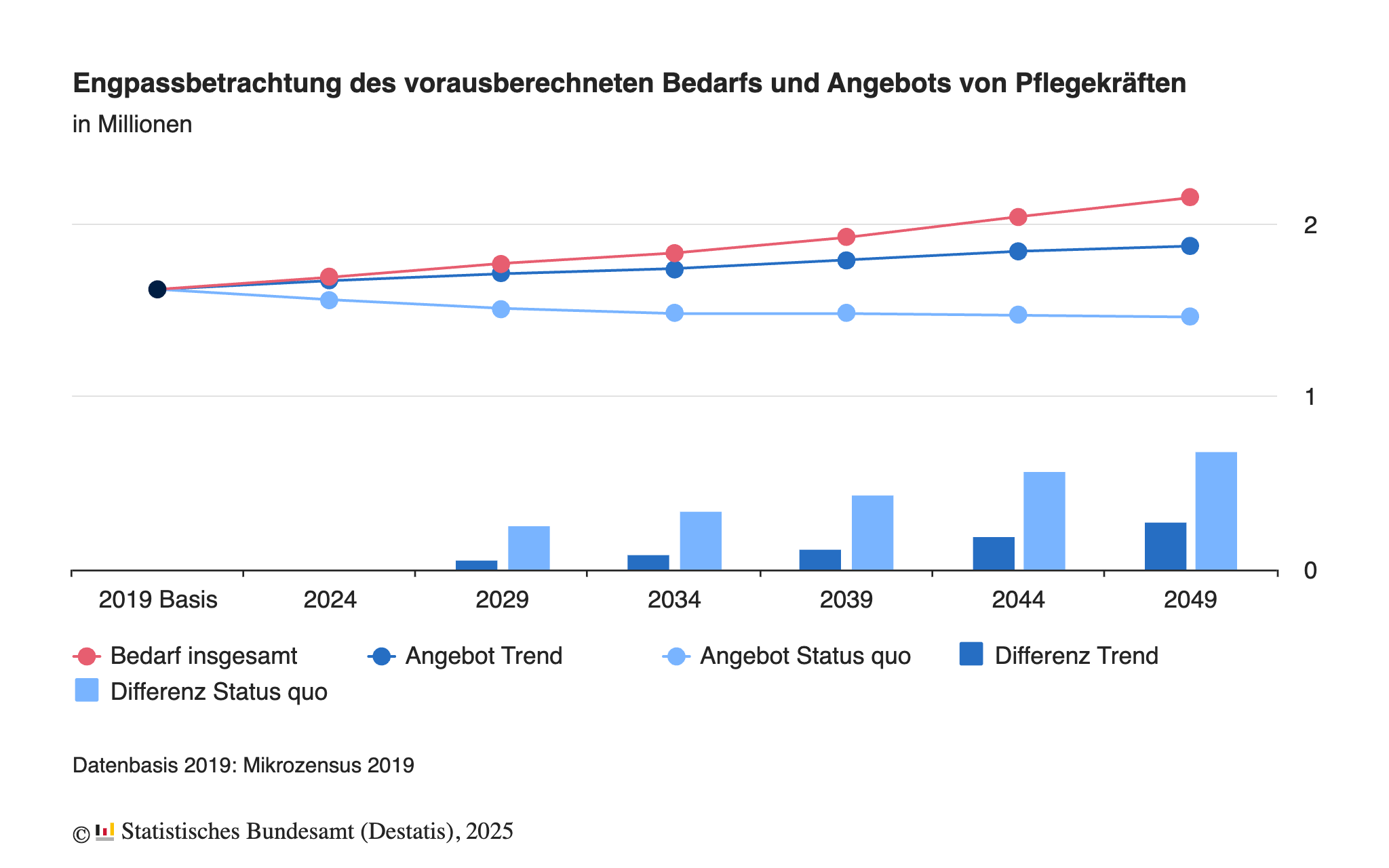
Two variants with a different focus on demographic and social changes were calculated for the development of the number of nursing staff. In addition to demographic developments, the so-called “trend variant” also takes into account the positive trends on the nursing labor market from the 2010s. It thus illustrates the potential that will arise for the supply of nursing staff if this development in the nursing professions continues. According to this forecast, the number of employed nurses will increase to 1.87 million (+15%) by 2049. According to this most favorable variant of the forecast, the number of available nursing staff in 2049 would be 280,000 below the expected demand.
The so-called “status quo variant”, on the other hand, only shows the effects of demographic developments on the future number of nursing staff. According to this scenario, the number of nursing staff would fall from 1.62 million in 2019 to 1.46 million (-10%) by 2049. The main driver of this development is the baby boomer generation reaching retirement age in the next ten years, which means that the labor market will lack the nursing staff needed for reasons of age alone. According to this most unfavorable variant of the forecast, there would be a calculated shortfall of 690,000 nursing staff in 2049.


